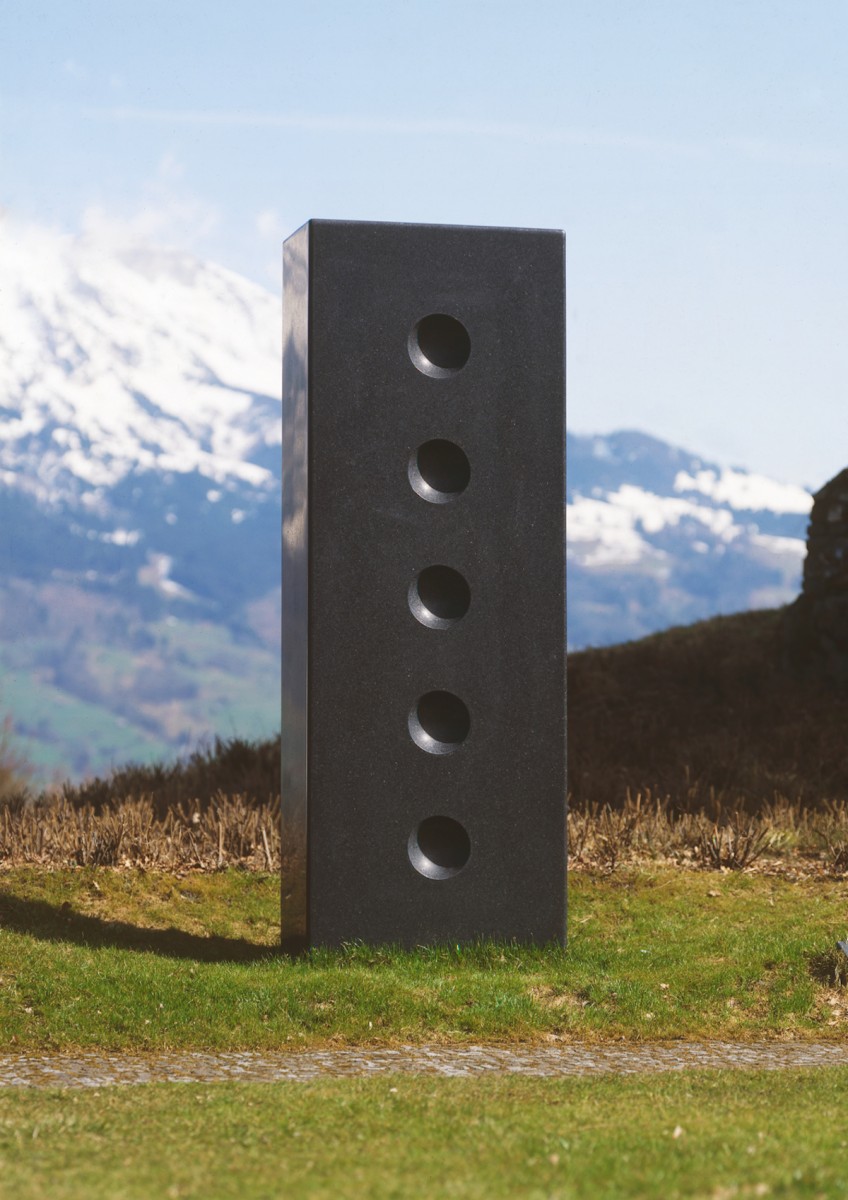Canadian granite
300 × 57 × 110 cm
Acquired with funds of the Holenia Trust, Vaduz
"It's different than in museums: engaging with a stone like this out in the countryside makes for a different experience: you experience the tree, the grass, the moss and the clouds, too." (Karl Prantl)
Carved into a precise upright rectangular block, the stony monolith towers three metres tall. Into one of the long sides are recessed ve hemispheres – clearly forming a vertical central axis – in which the shadows of the sun moving across the sky are inscribed, whereas the other surfaces, smoothly ground and polished all round, re ect the surrounding countryside up to the mountain ranges.
Karl Prantl not only set his stones in open space; working and thinking in open spaces also came to be the artist's guiding principle. The commission given to Prantl in 1958 by the Provincial Government of Burgenland to make a landmark is regarded as seminal for his entire subsequent work. The stone, later set up on the Austrian-Hungarian border in Nickelsdorf, its formal permeability representing not only separation but also transition, was carved by Prantl in the quarry of St. Margarethen in Burgenland, in use since Roman times. Working in the quarry was for Prantl a mode of sculptural work at the place of origin of his material, which is characterised by wholly different conditions and in uences than those in the con nes and seclusion of a studio. Wishing to let other sculptors share this experience, he initiated the 1st Symposium of European Sculptors, an event which brought together eleven sculptors from eight nations in 1959 to engage in joint work in the quarry and led to the foundation of sculptors' symposia around the globe.
Prantl carved Fünf Anrufungen (Five Invocations) out of sandy limestone as early as 1959, realising and varying this elementary form many times over since. In all cases, a series of hollow forms recalls a repetitive prayer practised as a form of meditation in Christianity and Eastern religions: invoking the names of divinities. This religious aspect in particular links the sculpture to the site of its installation, the church hill of Bendern.
Franziska Hilbe
